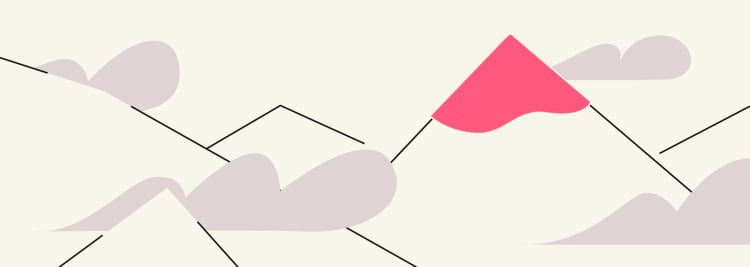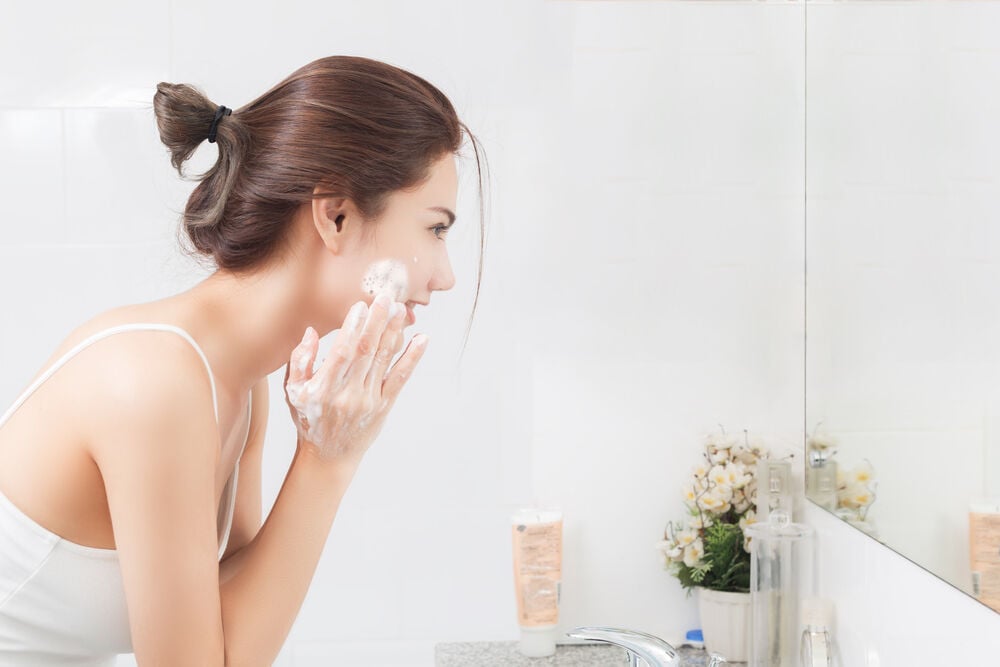Cystic acne is more than just unsightly — it’s a painful, persistent form of acne that can interfere with daily life and put a damper on your self-esteem. Let’s explore its underlying causes, how to identify it, and how to get rid of a cystic pimple.
-
Tracking cycle
-
Getting pregnant
-
Pregnancy
-
Help Center
-
Flo for Partners
-
Anonymous Mode
-
Flo app reviews
-
Flo Premium New
-
Secret Chats New
-
Symptom Checker New
-
Your cycle
-
Health 360°
-
Getting pregnant
-
Pregnancy
-
Being a mom
-
LGBTQ+
-
Quizzes
-
Ovulation calculator
-
hCG calculator
-
Pregnancy test calculator
-
Menstrual cycle calculator
-
Period calculator
-
Implantation calculator
-
Pregnancy weeks to months calculator
-
Pregnancy due date calculator
-
IVF and FET due date calculator
-
Due date calculator by ultrasound
-
Medical Affairs
-
Science & Research
-
Pass It On Project New
-
Privacy Portal
-
Press Center
-
Flo Accuracy
-
Careers
-
Contact Us
Cystic Acne: Common Causes and Proven Remedies


Every piece of content at Flo Health adheres to the highest editorial standards for language, style, and medical accuracy. To learn what we do to deliver the best health and lifestyle insights to you, check out our content review principles.
What is cystic acne?
Cystic acne is different from other types of acne. A cystic pimple forms deep below the surface of the skin, produced by a combination of sources. It eventually results in a large and sometimes painful red bump that’s itchy and tender to the touch.
While all acne involves a clogged hair follicle, an acne cyst contains dead skin and bacteria. Individuals dealing with cystic acne may notice acne nodules as well as cysts. Though nodulocystic acne is smaller in size, it’s especially irritating and difficult to treat.
Cystic acne can spread across large areas of your face, chest, back, shoulders, or upper arms. If and when the pus-filled clog erupts, the infection spreads, further aggravating the situation, and possibly leading to permanent scarring.
Who gets cystic acne? Since hormones play a significant role, you’re particularly susceptible to developing cystic acne in your teens and early twenties, but it could still strike at any age. While men are more prone to having severe cystic acne breakouts, women usually experience hormonal acne or cystic acne around the chin and jaw area.
Cystic acne lasts for months or years, if left untreated. That’s why it’s important to do some research on how to treat cystic acne, and to consult your dermatologist. Together, you can devise a cystic acne treatment plan that’s right for you.
What does cystic acne look like?
Typically larger, redder, and more painful than ordinary acne, cystic acne is fairly easy to identify. If you notice raised red bumps that feel tender to the touch and seem rooted deep beneath your skin, it’s probably cystic acne. At times resembling boils in appearance, cystic acne is also filled with pus. In contrast, boils are the product of surface staph bacteria and come with certain flu-like symptoms.
Note that cystic acne occasionally crops up as a large white (rather than red) bump, or the pimple will feature a white bump or blackhead at its center. Larger in size than other forms of acne, cystic acne is capable of growing to several centimeters in diameter.
What causes cystic acne?
While the explanations behind what causes a cyst have yet to be fully understood, hormones, genes, and medical conditions could all be contributing factors.
One particular cystic acne cause is an abundance of androgen hormones. Aside from adolescence, androgens also increase during menstruation, pregnancy, or menopause.
Polycystic ovarian syndrome, which commonly presents in your childbearing years, is another culprit. The hormonal imbalance triggers irregular periods, excessive hair growth, and cystic acne.
While the explanations behind what causes a cyst have yet to be fully understood, hormones, genes, and medical conditions could all be contributing factors.
Lastly, there’s a potential genetic component to what causes cysts. If one or both of your parents struggled with cystic pimples, you might, too.
Generally speaking, overactive glands produce excessive amounts of oil, fostering the growth of cystic acne. The presence of too many dead skin cells in your hair follicles or propionibacteria only worsen things.
Cystic acne spreads by rupturing through your follicle walls, leaching bacteria into your skin and, in turn, forming new cysts. The depth at which this occurs below your skin escalates the severity of these lesions.
Take a quiz
Find out what you can do with our Health Assistant
How to get rid of cystic acne
How can you treat cystic acne? Unfortunately, ordinary over-the-counter medications don’t pack enough punch to do the job. Although you won’t find any fast fixes for cystic acne removal, the best treatment for cystic acne includes a variety of external and internal options.
- Oral antibiotics: They battle inflammation and kill bacteria, but their effectiveness dwindles over time, making them a better short-term remedy. The most commonly prescribed tetracycline forms of antibiotics for cystic acne include doxycycline, minocycline, and lymecycline or macrolides topical antibiotics like clindamycin and erythromycin.
- External gels, lotions, or liquids: This variety of cystic acne treatment over the counter contains retinoids, a derivative of vitamin A. Retinoids work by preventing the clogging of your hair follicles and offer a long-term solution to the issue. Note that even prescription-strength products cannot eliminate cystic acne on their own. They’ve instead proven to be more effective when used in combination with oral antibiotics to fight cystic acne.
- Isotretinoin, birth-control pills, or anti-androgen agents: Oral isotretinoin attacks all possible causes of acne, including the bacteria found in cystic acne. Considered the strongest treatment for cystic acne on the market, 4 out of 5 people who use them have clear skin after 4 months. However, due to possible side effects, your doctor must closely monitor your usage, and it cannot be taken if you’re trying to conceive. Alternatively, birth control pills (which have been approved by the FDA for acne therapy) can help curb hormone-induced oil production. Finally, the diuretic and high blood pressure medication known as spironolactone is useful for clearing up hormonal cystic acne and cystic acne. It blocks the effect of androgen hormones on your sebaceous glands.
Are there ways to prevent cystic acne?
Believe it or not, it is possible to prevent cystic acne. Practice good hygiene when it comes to your skin and follow these tips:
- Don’t pick: Picking at your skin is a surefire way to further inflame the dermis and make cystic acne noticeably worse. Your fingertips and nails spread existing bacteria to other areas while also introducing brand new bacteria.
- Wash daily: Once or twice a day, wash your face, chest, back, and shoulders with a gentle cleanser. Avoid purchasing greasy creams or irritating scrubs.

- Choose makeup carefully: A thick, heavy layer of cosmetics adds even more oil to your skin and is counterproductive when you’re battling cystic acne. Search for products labeled “oil-free” or “non-comedogenic,” which will keep your pores clog-free.
- Remove makeup at night: Experts say the longer you sleep with your makeup on, the more clogged your pores become. And as this backup occurs, acne begins forming, attracting bacteria in the process and creating still more acne. That’s why it’s crucial to take a few moments before bedtime to wash any makeup off.
- Wear sunscreen everyday: Sunscreen protects your skin from damaging UV rays that cause sunburns, premature aging, and skin cancer. Furthermore, if you’re currently taking oral antibiotics or retinoids for cystic acne, your skin is extra sensitive to sun exposure.
- Take good care of yourself: Even though cystic acne hasn’t been directly linked to diet or lifestyle, finding ways to live and eat healthy is bound to benefit your skin. Stick to natural, unprocessed foods and reduce sugar consumption as it increases insulin levels and oil production. Additionally, try to eliminate stress, which actually has been associated with breakouts and cystic acne.
Conclusion
If you’re struggling with cystic acne, it’s important to get help from a medical professional. Over-the-counter medications and at-home treatments won’t get to the root of the problem. But with the advice of a dermatologist and a customized treatment plan, cystic acne might become a thing of the past.


Hey, I'm Anique
I started using Flo app to track my period and ovulation because we wanted to have a baby.


The Flo app helped me learn about my body and spot ovulation signs during our conception journey.


I vividly
remember the day
that we switched
Flo into
Pregnancy Mode — it was
such a special
moment.
Real stories, real results
Learn how the Flo app became an amazing cheerleader for us on our conception journey.




